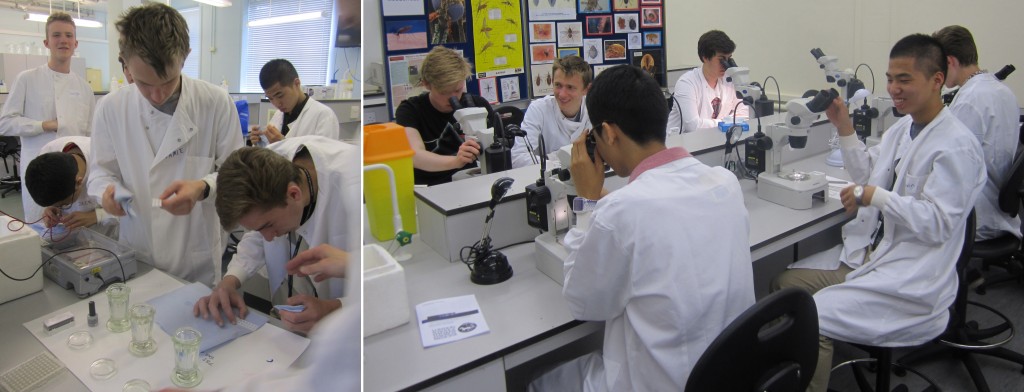For ten years, the Royal Society-Pfizer Awards have been recognising outstanding African Scientists. For the first time this year, on the 19th October, there were two awardees. The advanced award was presented to Prof Jean-Jacques Muyembe-Tamfum, Institut National de Recherche Biomedicale (Democratic Republic of Congo), in recognition of a lifetime working on Ebola. A mid-career award was presented to Dr Gordon A. Awandare of the University of Ghana.
With funding from the World Bank, Gordon recently set up the West African Centre for Cell Biology of infectious Pathogens (WACCBIP) for the delivery of high quality African-led pathogen research and postgraduate teaching. More recently, and in partnership with a several international institutions, including LSHTM, Gordon won prestigious Wellcome Trust DELTAS funding to establish a pan-African PhD and post-doctoral programme based at the University of Ghana (more on this in an upcoming post!).
A few of us from LSHTM were lucky enough to be invited to the award ceremony. This included a day of talks highlighting the achievements of the 2015 awardees, as well as those of past winners. There were also fascinating supporting talks from Prof Peter Piot (LSHTM) on Ebola and Prof Mark Carrington (University of Cambridge) on human serum sensitivity in African trypanosomes.
Listening to the talks of past recipients and the acceptance speeches of the 2015 winners, it was clear just how important recognition from august institutions such as the Royal Society is. These awards make a real difference to the research careers of African scientists, acknowledging the high quality of their work, and boosting their ability to secure the funding necessary to build on their successes and to expand their research programmes. Ultimately, such recognition goes some way to support the continued development of a dynamic and productive scientific research community in Africa, something the whole continent (and the international community) can benefit from.
